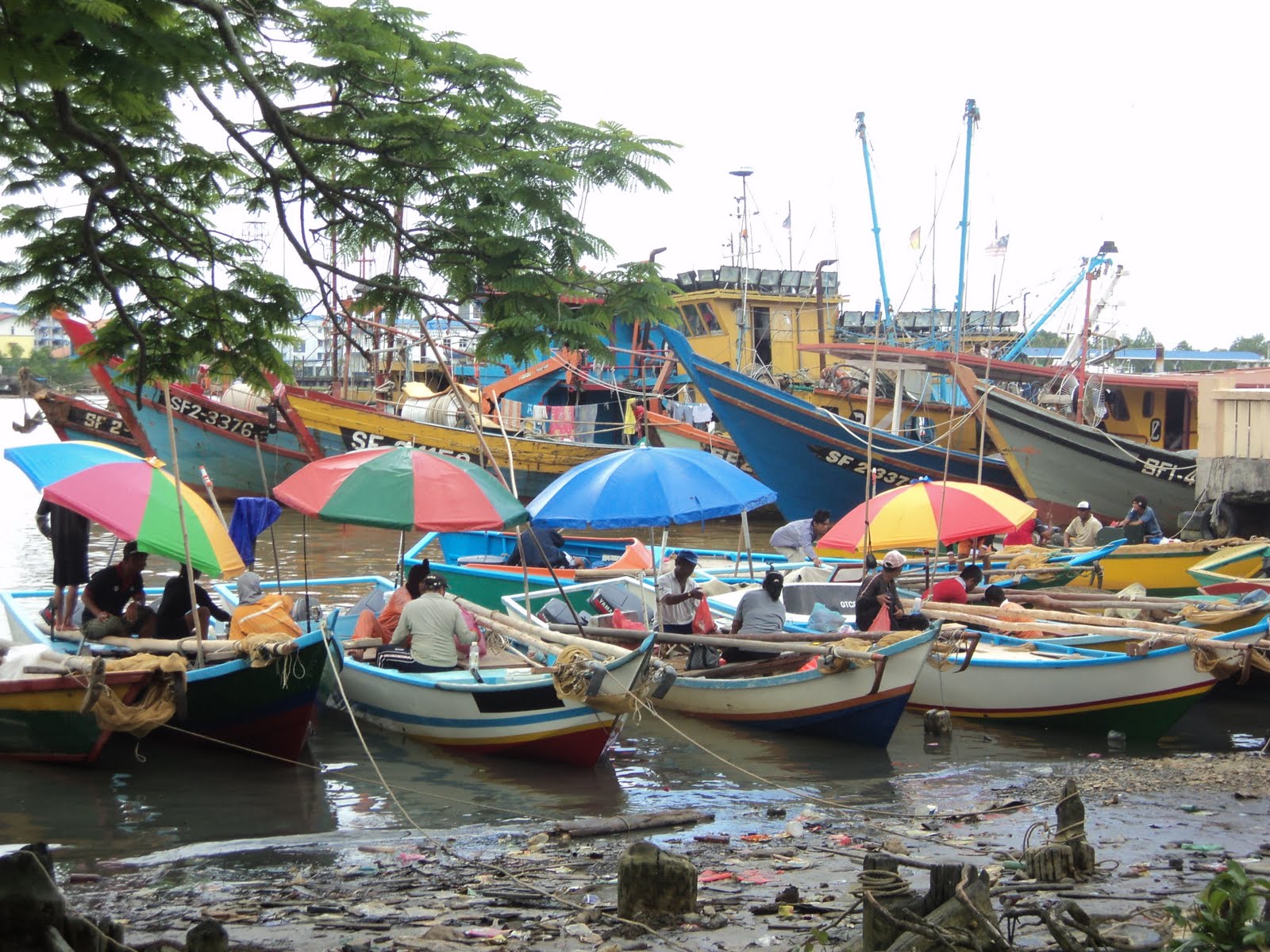 |
| Welcome to Bintulu - home of the best Belacan money can buy. |
Small fishing boats park nearby the town local market have the shrimps ready packed in ' gantangs'. At the early morning price is inelastic - it's a sellers market. Later in the day when the shrimps are less fresh and the demand less, it's a buyers market. However, when the weather is cloudy or rainy the shrimps can sell much cheaper because there's little sun to help dry them. But then Bintulu's weather is such that when the bubuk season is around there are always days when the sun naturally brings cheer.
 |
| Buying 'bubuk' early morning near to Bintulu's tamu or local market. |
The dried shrimps are pounded in a special vessel called the ' lesung' which is a wooden mortar. In Bintulu, people prefer to use the mortar from the hardest timber species here called the belian. The 'anak lesung' or the pestle is also made from belian timber as seen in picture above. It takes about 2-3 rounds of pounding to obtain a fine paste of belacan. The pounding process can stretch to several days.
Above is the finished belacan product. Each piece is about a kilo in weight and the selling price currently in Bintulu tamu or local market is RM 40-60 depending on quality and availability. Normally for a small family a kilo of belacan will last for about a year or slightly less depending on usage. That's about it folks. If you haven't try Bintulu belacan please do so. Put it in your list of 1000 things to do before you die!






No comments:
Post a Comment